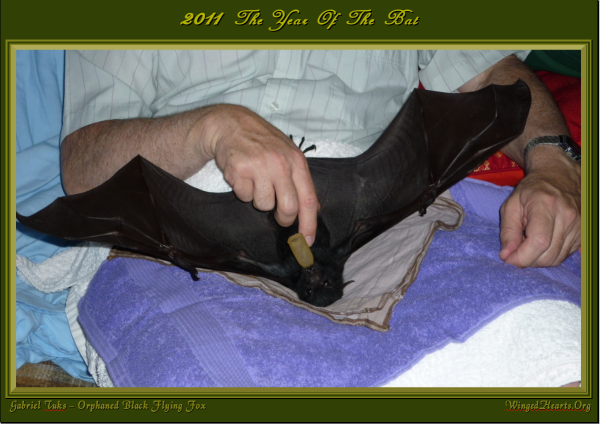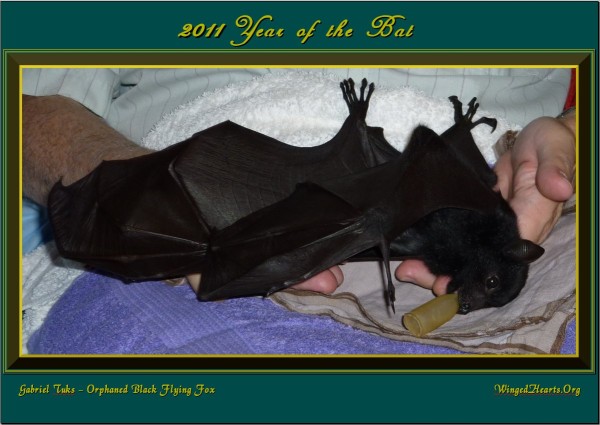Bats in Care - 2011 Year of the Bat Posters
Bats are the world's only flying mammal capable of sustained flight and are crucial to the survival of our forests.
Flying foxes and Microbats are endangered species. Many babies die every year as their mothers die by falling victim to barbed wires, bird netting, electrocution, wind farms and terrible storms. A baby flying fox cannot survive without its mother because it cannot thermoregulate for 3-5 weeks, feed itself or fly until 12-15 weeks of age.
Thanks to the collossal rescue efforts of the small but highly dedicated bat rescue groups like Bats Queensland and Long Grass Wildlife Refuge Centre many orphan bats and injured bats have been rescued and rehabilitated.
To celebrate the international Year of the Bat - Winged Hearts.org has created a series of Bats In Care Posters. These posters feature our own Gabriel Tuks - an orphaned black flying fox whom we were privileged to care for in 2009. Tuki as we fondly call him was successfully rehabilitated in March 2010.
You can preview and download the posters below (all free). Please feel free to share widely with your family and friends. We will be issuing a Special Edition on Flying Foxes and Bats in a few weeks' time. All subscribers will receive a free copy. To get your free subscription, enter your name and details in the box on the left hand bar.
Poster 1

Click here for Poster 1 - A4 size Click here for Poster 1 - A3 Size











